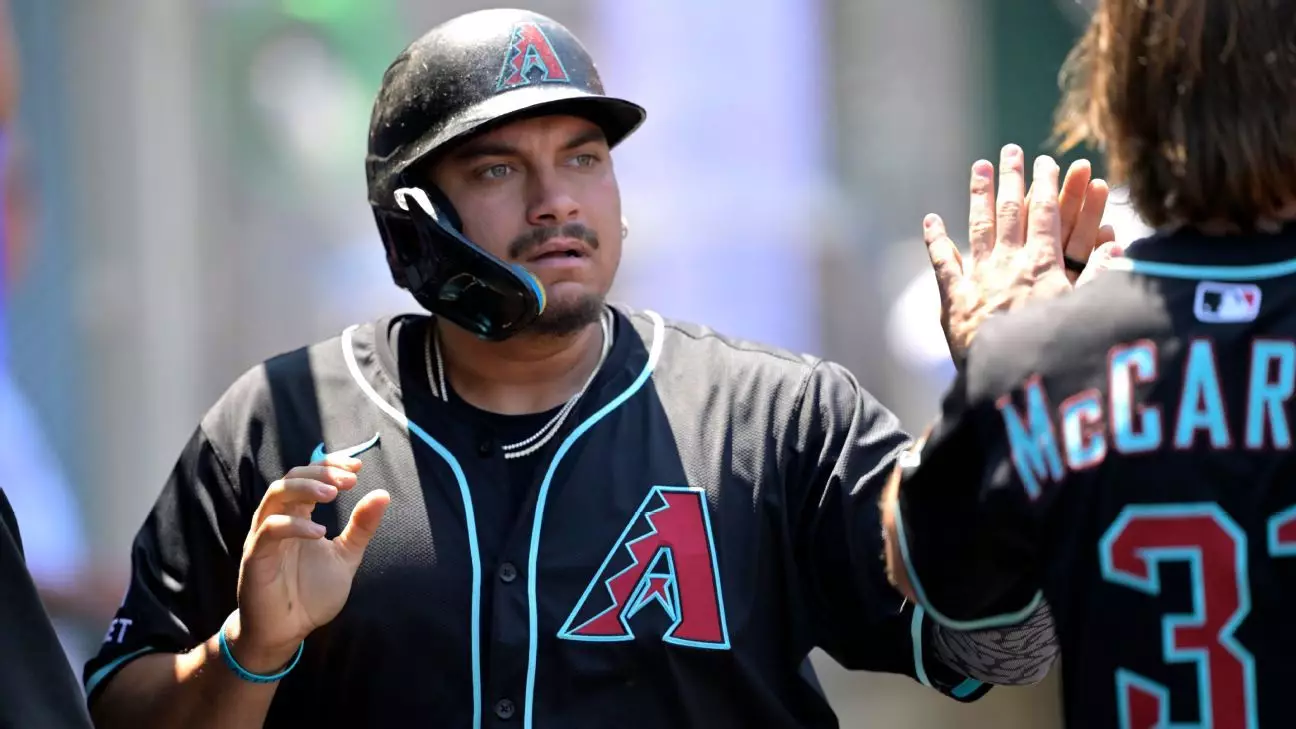In a season marked by strategic patience and an unwavering focus on long-term success, the Seattle Mariners have taken a definitive step toward solidifying their postseason ambitions. With a decisive trade that brought first baseman Josh Naylor from the Arizona Diamondbacks, Seattle signaled that they are no longer content to observe from the sidelines—they intend to compete fiercely and make a statement. Unlike previous years where incremental moves sufficed, this trade underlines a paradigm shift, emphasizing proactive risk-taking aimed at immediate impact.
This acquisition isn’t just about filling a roster hole; it’s a declaration that the Mariners understand their window of opportunity. By securing a slugger like Naylor—a player with a proven track record of clutch hits and low strikeout rates—the Mariners are equipping themselves with a potent offensive weapon. Their vision is clear: capitalize on the current season, embrace the postseason race wholeheartedly, and leverage newfound offensive firepower to push ahead of divisional rivals. This aggressive move raises significant questions about the team’s long-term strategy and the boldness of their dreams.
The Diamondbacks’ Rebuild and the Flurry of Trade Assets
Arizona, a franchise that unexpectedly reached the World Series in 2023, now appears to be recalibrating its ambitions, signaling a willingness to trade key players before the July 31 deadline. Their roster, brimming with talent like Eugenio Suarez and pitchers Merrill Kelly and Zac Gallen, has become a treasure trove for contenders seeking playoff-ready pieces. The Diamondbacks are clearly scripting a rebuild or at least a strategic reallocation, shedding players whose contracts are nearing expiration in exchange for promising prospects.
The trade of Josh Naylor, alongside the prospects Brandyn Garcia and Ashton Izzi, exemplifies Arizona’s focus on youth development and future value. Garcia, a 25-year-old reliever-turned-starter with electric stuff, offers the Diamondbacks hope for a new arm to develop, while Izzi’s promising low-90s fastball and refined off-speed pitches suggest they are stockpiling young pitchers to restore their pitching depth. Arizona’s current roster, led by talented core players, is at a crossroads—either to push towards contention with a retooled squad or to embrace a rebuild with an eye on future drafts and prospects.
This dynamic creates a chessboard where trades are not just about today’s needs but about shaping each franchise’s destiny. Arizona’s openness to deal their star players underlines an understanding that, if they are to remain competitive, they must adjust their approach in a league increasingly driven by data, prospect evaluation, and strategic flexibility.
The Mariners’ Philosophy: Balancing Talent and Potential
What truly distinguishes the Mariners’ recent trade from previous, more conservative seasons is their reluctance to part with their top-tier prospects. Their core farm system boasts elite talents such as shortstop Colt Emerson, outfielder Jonny Farmelo, and right-hander Ryan Sloan. Seattle’s cautious approach reveals a philosophy rooted in patience and confidence—trusting in their developmental system to yield future stars rather than chasing short-term fixes.
Yet, this very approach makes their trade target of Naylor all the more intriguing. It suggests a willingness to deviate from their usual restraint for a shot at immediate postseason success. The Mariners haven’t simply added a player; they are making a calculated bet that their talented roster, combined with this offensive upgrade, can make a genuine run. Their recent victory over the Angels and their standing in the AL wild-card race underscore the delicate balance they strike—between nurturing potential and capitalizing on this fleeting opportunity.
This calculated risk reflects a broader worldview: in an era of competitive parity, standing still isn’t an option. Their current positioning—just behind Houston and slightly ahead of Boston—gives credence to their belief that aggressive moves could pay dividends. Yet, their hesitance to part with their higher prospects also signals a sustained trust in development and a long-term blueprint. It’s a tightrope walk, and whether this gamble results in postseason glory depends on a complex blend of talent, timing, and a bit of luck.
The Future Outlook: A Battle of Strategy and Timing
As the trade deadline approaches, the contrasting philosophies of the Mariners and Diamondbacks highlight the unpredictable nature of baseball’s power dynamic. For Seattle, the decision to acquire a seasoned slugger like Naylor is a calculated gamble, banking on his ability to deliver clutch performances under postseason pressure. For Arizona, shedding stars in favor of prospects is an acknowledgment of their current limitations and a desire to build from the ground up.
The true test lies in how each organization manages their roster moving forward. Seattle’s gamble hinges on their ability to integrate Naylor seamlessly into a team that has already shown flashes of playoff potential. Their current standing suggests they are well-positioned, but questions remain about their bullpen depth, pitching consistency, and the ability to sustain offensive production.
Meanwhile, Arizona’s strategy reflects a broader trend in baseball—embracing rebuilds, leveraging prospects, and timing their moves to coincide with future windows. Their willingness to trade proven veterans signals a desire to reset quickly if their prospects develop as hoped. Both teams are navigating a complex landscape where short-term gains must be balanced against long-term ambitions.
These trades and strategic shifts are shaping the very DNA of this season’s postseason race. For the Mariners, the bold move to acquire Naylor underscores their determination to seize the moment—an assertion that success isn’t just about today, but about establishing momentum for years to come. Whether this gamble pays off or not, it undeniably marks a turning point—one where hesitation is replaced by ambition, and the pursuit of greatness becomes the prevailing mandate.


Leave a Reply